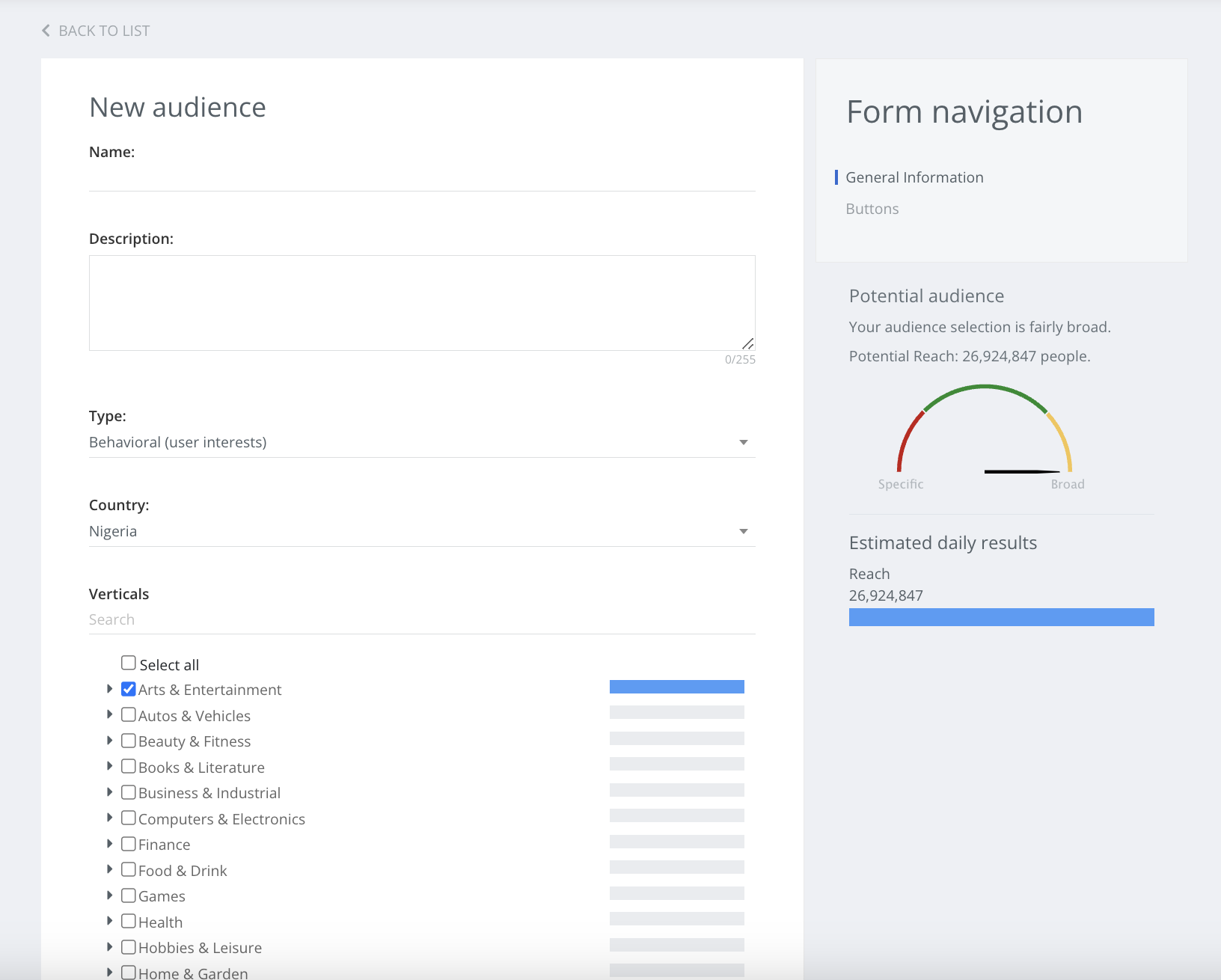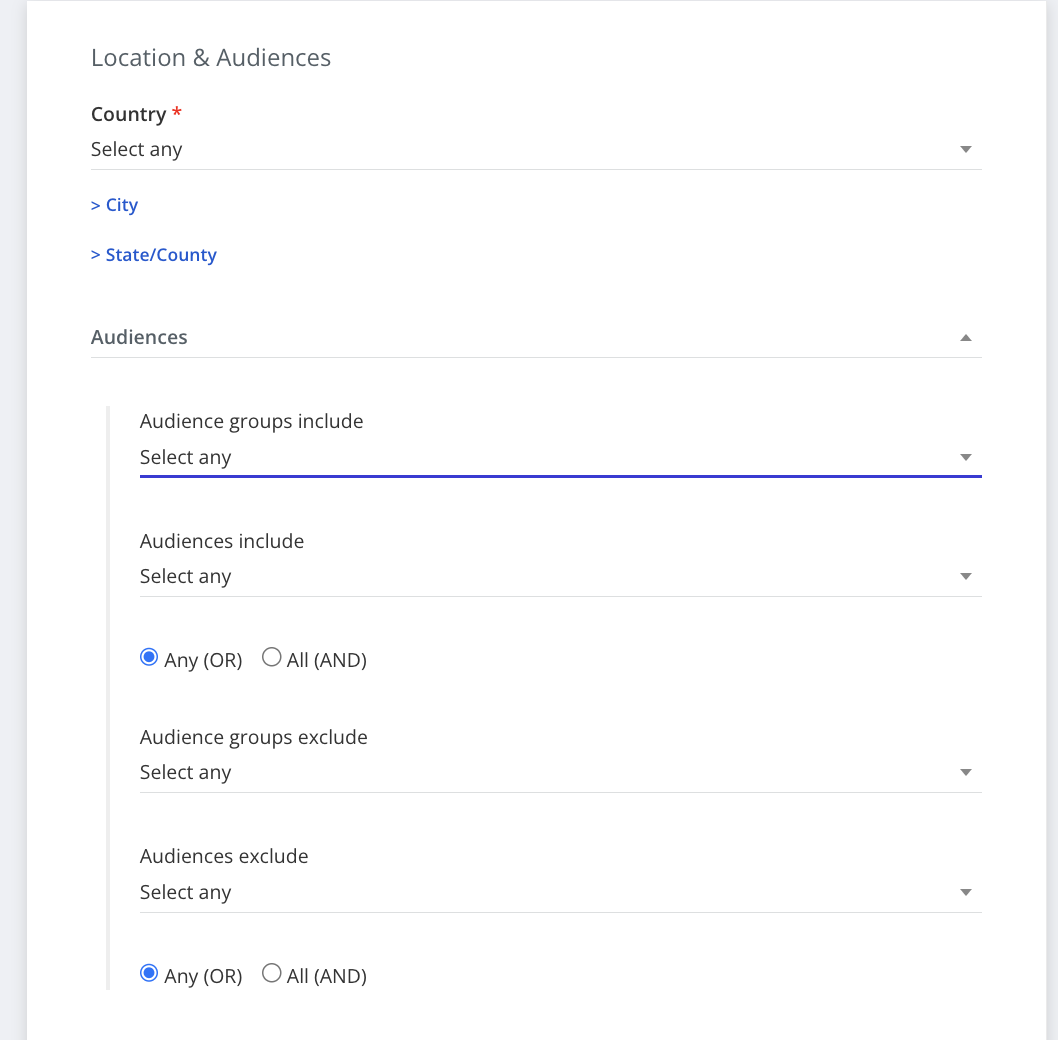Unlocking the Power of Interest Audience Targeting: An In-Depth Look
Introduction
In the ever-evolving world of digital advertising, advertisers are constantly seeking innovative ways to reach their target audience with precision and effectiveness. One such powerful tool in their arsenal is interest audience targeting. By leveraging the insights gained from user interests, advertisers can tailor their campaigns to specific audience segments, resulting in higher engagement and conversion rates. In this article, we will explore the targeting logic behind interest audience targeting and shed light on how it enables advertisers to connect with the right users at the right time.
Workflows - Audience Creation
To set up an audience for interest audience targeting, follow these steps:
- Go to your advertising platform's dashboard or interface.
- Locate the "Tools" section or tab, usually located in the top navigation menu.
- Click on "Audiences"
- Look for the "Add Audience" or "Create New Audience" button and click on it.
- In the audience creation form, you will be prompted to select the type of audience. Choose "Behavioral (user interest)" from the dropdown menu. This option allows you to target users based on their specific interests.
- Next, you will see a list of available user interests or categories. Select the interest(s) that align with your campaign objectives. For example, if you are promoting cat-related products, you might choose "Cat Lovers" as the user interest.
- Provide a name for your audience to easily identify it later. You can also add a description or any additional notes for reference.
- Save or submit the audience to create it.
Workflows - Campaign Setup & Audience Selection
Once you have set up your audience(s) for interest targeting, you can add them to your campaign setup to ensure your ads reach the desired audience. Follow these steps:
Targeting Logic - Audience Targeting
Behavioral targeting allows campaigns to participate in auctions based on specific criteria related to the interests of the target audience. Let's explore the targeting logic behind behavioral audience targeting:
-
Domain Categorization: When a campaign is set up with behavioral targeting, it enters an auction if the domain associated with the bid request matches the desired category. For example, if the campaign is targeting cat lovers, it will participate in the auction if the bid request's domain is categorized as 'cat lovers'. This ensures that the ad is displayed on websites or platforms that fall within the specified category, reaching the intended audience.
-
User Profile Matching: In addition to domain categorization, campaigns can also participate in the auction based on user profiles. Each user has a unique identifier known as a Data Management Platform (DMP) ID. If the user's DMP profile indicates an interest in cat lovers, the campaign will enter the auction. This enables advertisers to target users who have expressed a preference for cats, ensuring that the ad is shown to relevant individuals.
By leveraging both domain categorization and user profile matching, campaigns can effectively reach their target audience in the context of behavioral targeting. This approach maximizes the chances of engaging users who have a genuine interest in the specific category, leading to higher engagement and conversion rates.
It's important to note that the targeting logic operates within the framework of an auction, where campaigns compete for ad placement. The highest bidder who meets the targeting criteria secures the opportunity to display their ad to the user who triggered the bid request. This ensures that ads are delivered to the most relevant users based on their interests and the campaign's targeting settings.
Targeting Logic - OR, AND & Exclude Functions
In the Audience section of the campaign setup, advertisers have the flexibility to combine audiences using OR and AND operators, as well as exclude unwanted audiences.
-
OR Operator: Advertisers can add multiple audiences using the OR operator, reaching users who match any of the selected audiences. This broadens the targeting approach and can be useful when aiming for a broader audience or multiple interest categories.
-
AND Operator: By using the AND operator, advertisers can create more specific targeting. Ads will be shown only to users who match all the selected audiences. This allows for a narrower and more precise audience selection.
-
Excluding Audiences: The option to exclude audiences allows advertisers to refine targeting by excluding specific audience segments. This helps avoid showing ads to irrelevant or conflicting interest groups.
Utilizing these functionalities, advertisers can tailor their targeting strategy to align with their business goals. Whether it's reaching a broader audience, targeting specific interest combinations, or excluding certain segments, these options provide flexibility and optimization opportunities. Regular evaluation of campaign performance is essential to ensure effective targeting.
Summary
Audience creation in digital advertising involves defining user interests and behaviors to effectively target desired audiences. In campaign setup, advertisers add audiences and configure targeting options to refine their reach. The targeting logic combines domain categorization and user profile matching, allowing campaigns to participate in auctions based on relevant domains or user interests. By leveraging these processes, advertisers can create precise audiences, set up campaigns with tailored targeting, and maximize the effectiveness of their digital advertising efforts.


